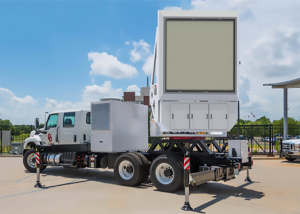NORMAN, OKLA. – A $7.4 million grant awarded from the United States Office of Naval Research to the University of Oklahoma will fund the development of a scanner and innovative digital radar solutions to support research, prototyping and testing of advanced digital radar concepts for the Navy and the U.S. Department of Defense. The project will also make OU home to the largest university-based scanner for near-field measurements in the nation.
Mark Yeary, project lead and Presidential Professor in the Gallogly College of Engineering, School of Electrical and Computer Engineering, said the near-field scanner is “an indoor antenna measurement system that is used to conduct high-accuracy antenna characterizations” and provides essential support for radar before being deployed in the field, including “reduced detection times and improved targeting precision.”
“We want to change how to think about and use radar, and we want to do that by creating the most flexible and advanced digital radar systems here at the University of Oklahoma,” he added.
Yeary said the overarching goal is to build a state-of-the-art measurement system and to host its supporting experiments to enhance the nation’s security and train the next generation of students.
“This project builds on the research team’s years of expertise developing the world’s most advanced weather radar and applies OU research expertise to make an impact for aerospace and defense critical issues,” said Tomás Díaz de la Rubia, OU vice president for research and partnerships.
The three-year project will create the largest near-field scanner in the nation at a university, to be housed at OU’s Advanced Radar Research Center. The face of the scanner will be 20 feet by 20 feet and will enable OU to characterize its large mobile phased array radar systems, which are currently under development, prior to participation in joint experiments with the U.S. Department of Defense.
“It is an absolute delight to see this strong team land such a major award from the Navy,” said Bob Palmer, ARRC executive director and an associate vice president for research and partnerships. “The capabilities this funding will enable will put OU and ARRC at the top nationally with helping the Navy study the advantages of digital phased array radars.”

